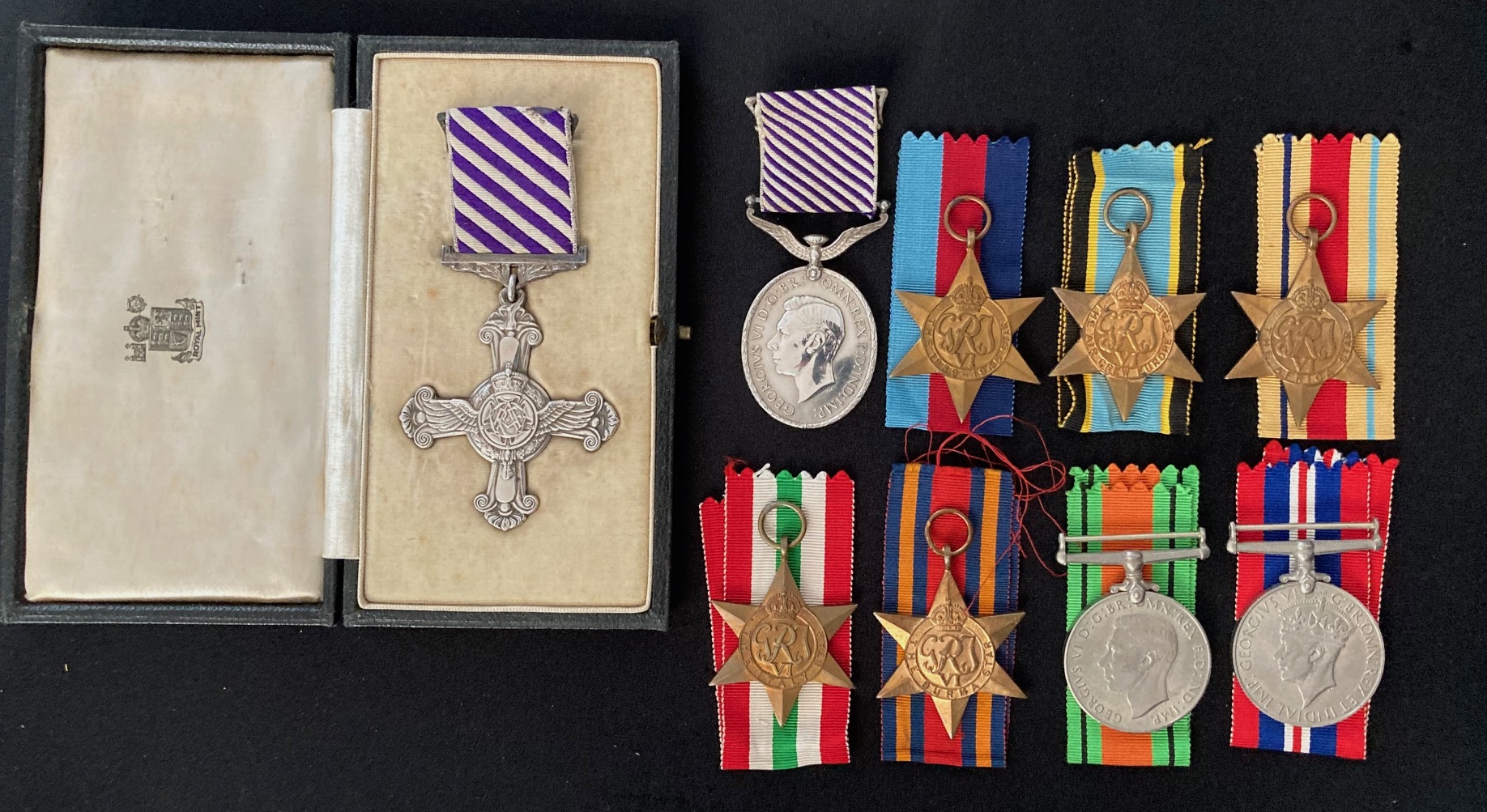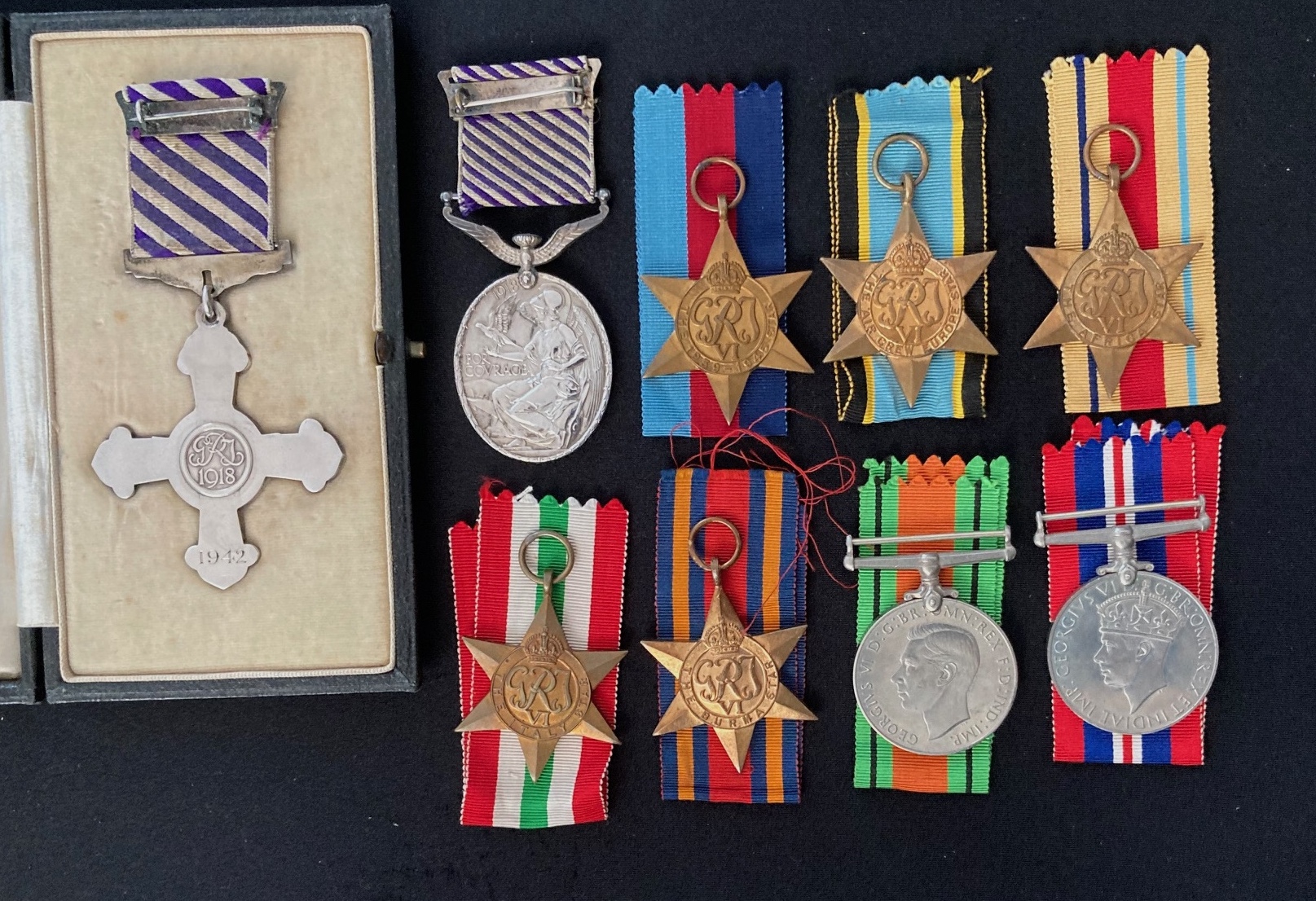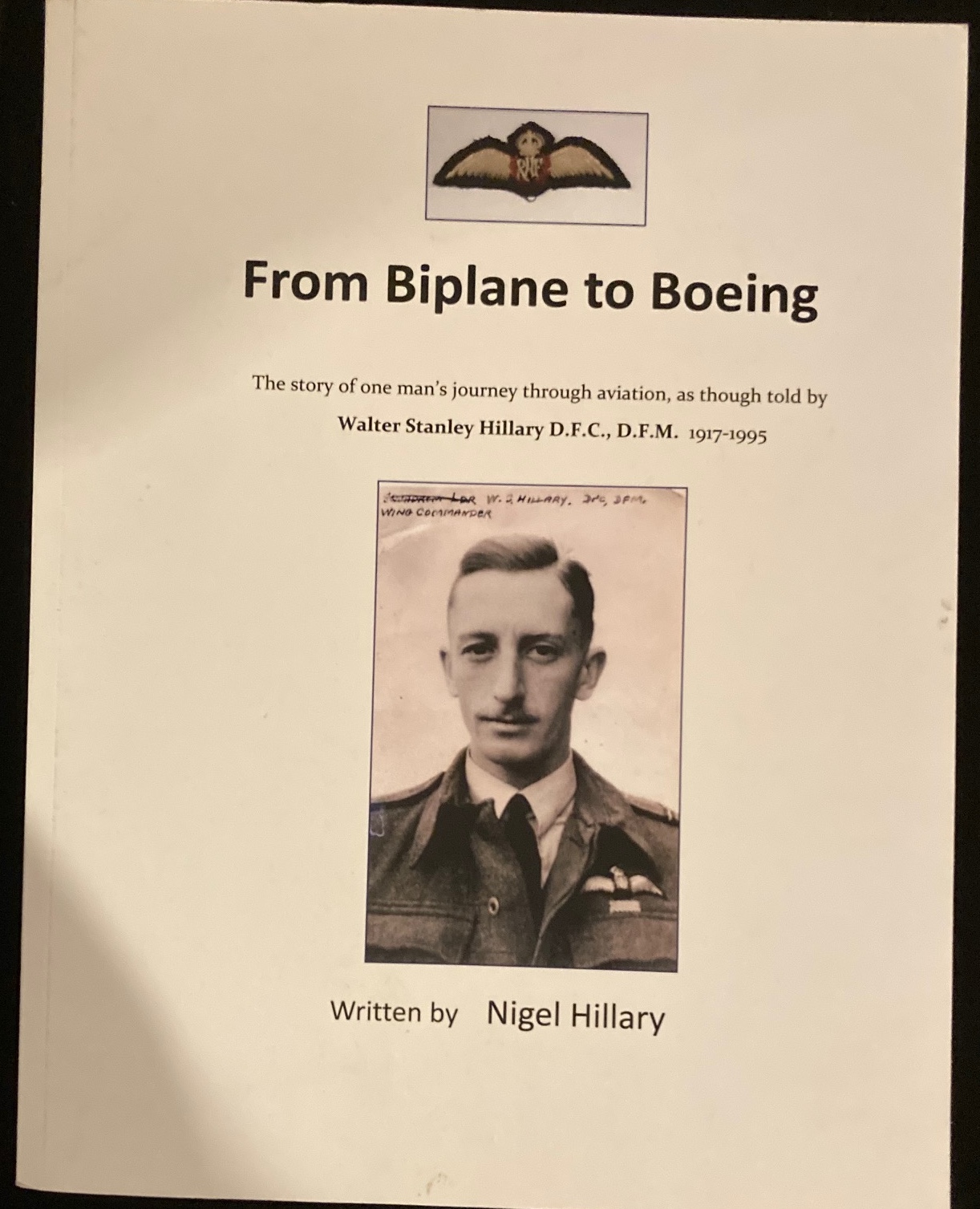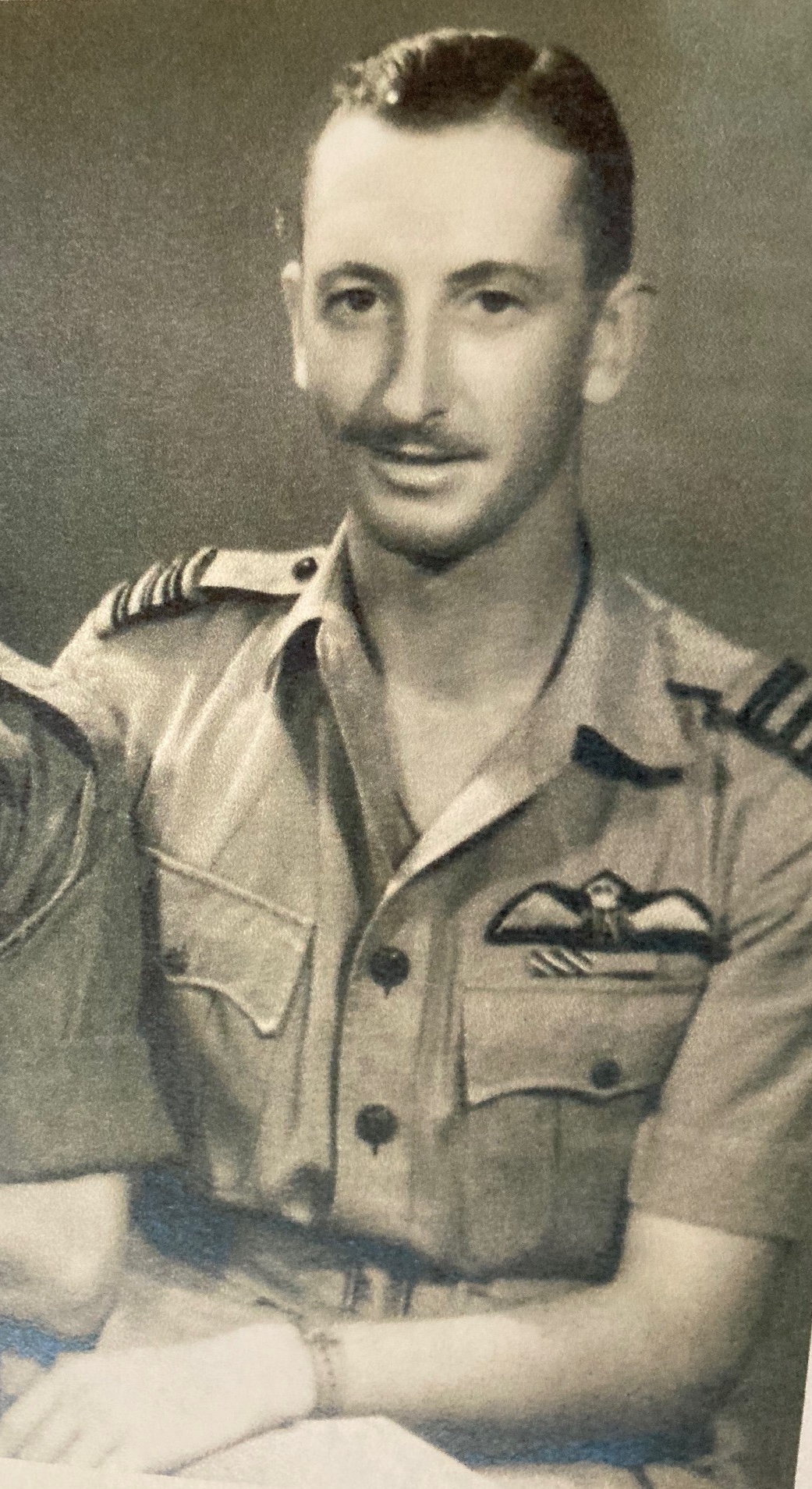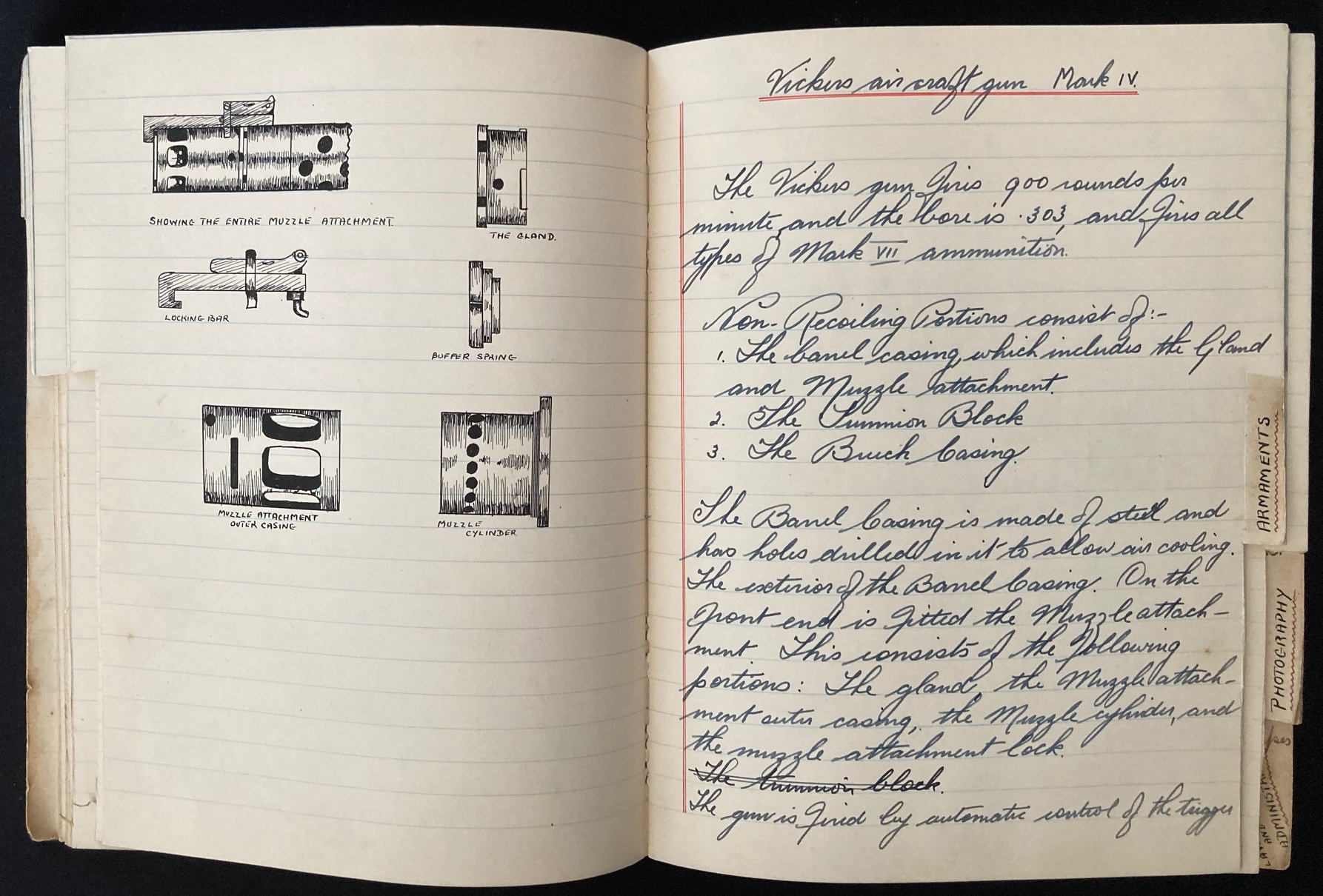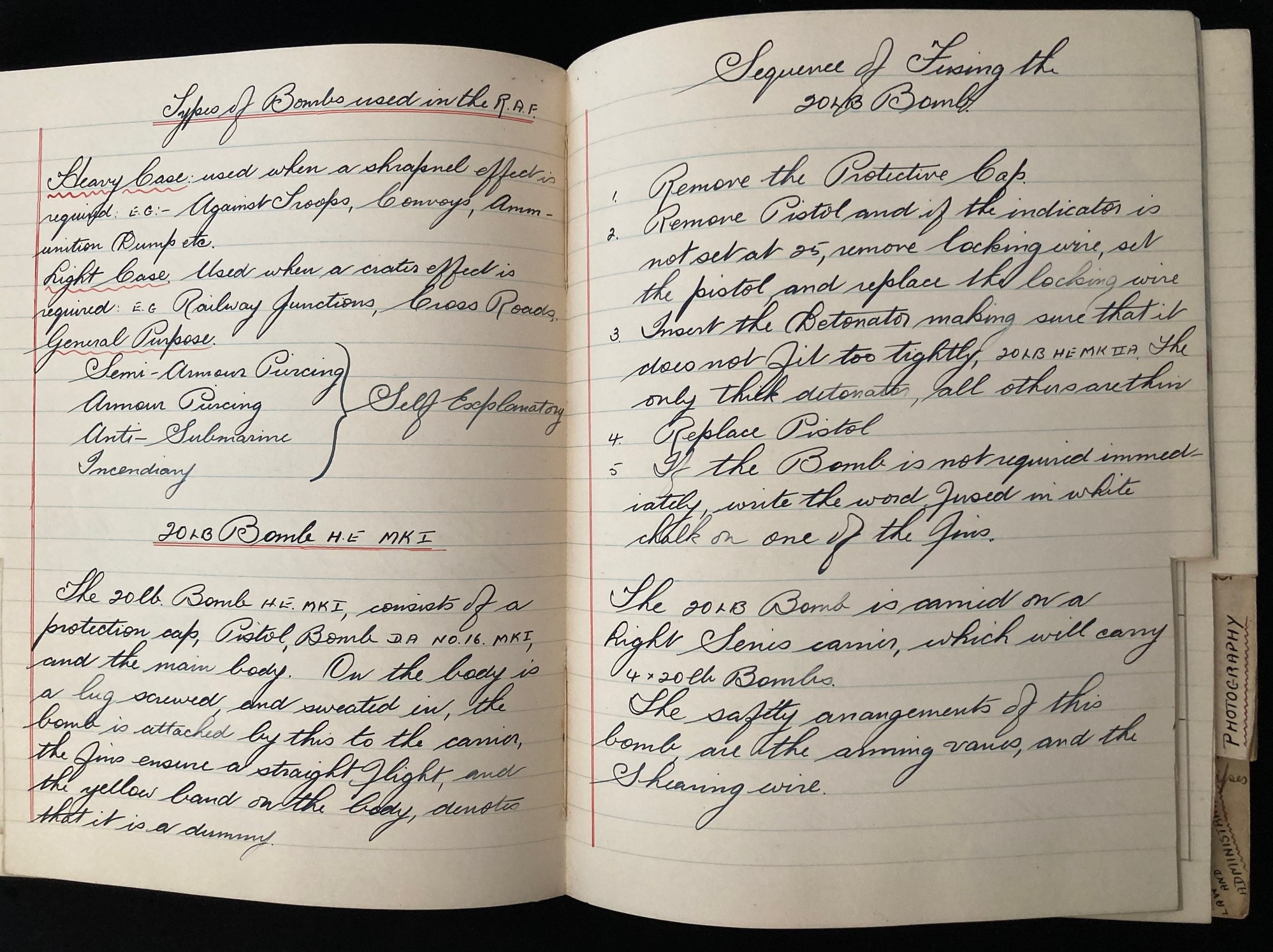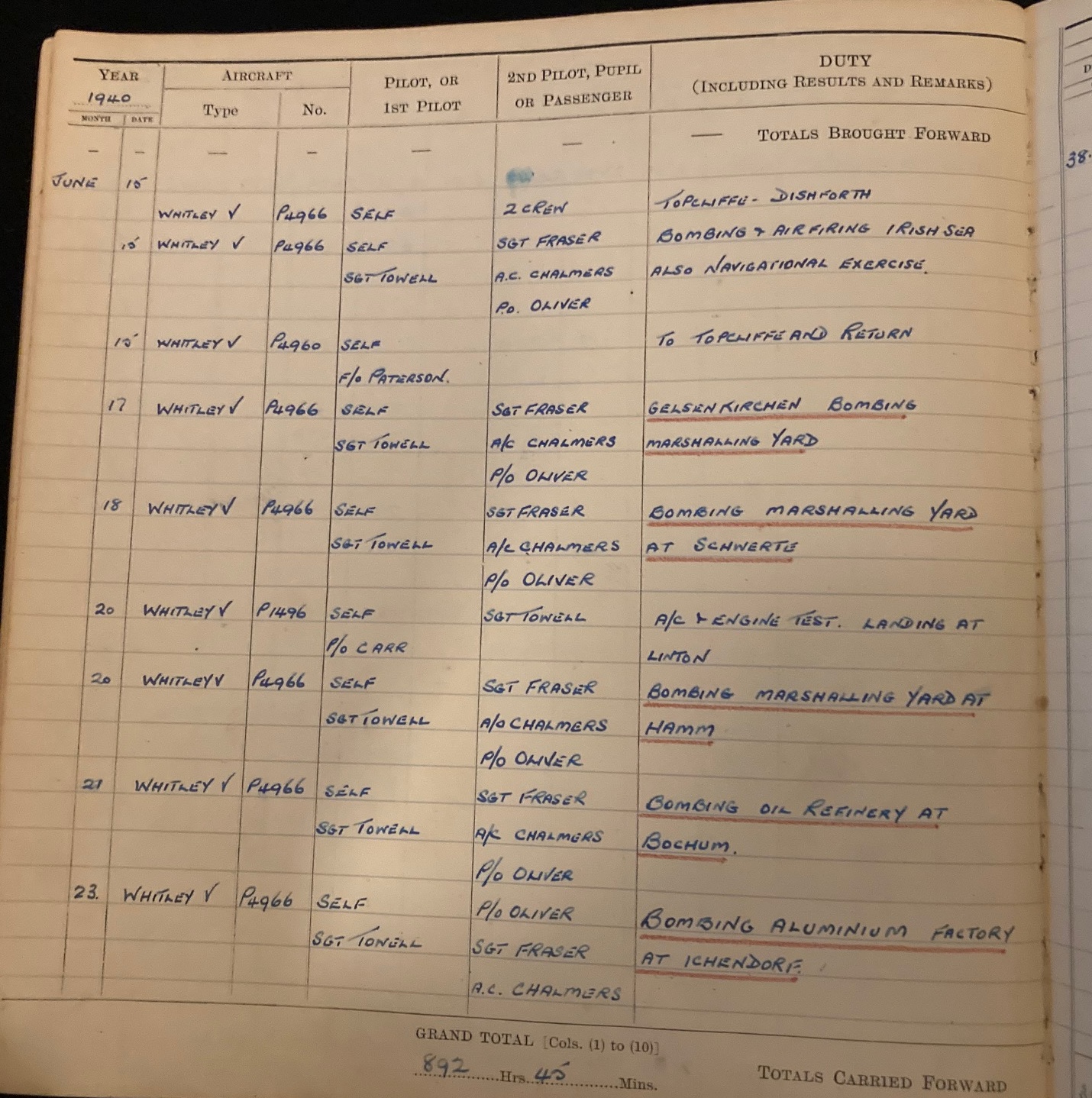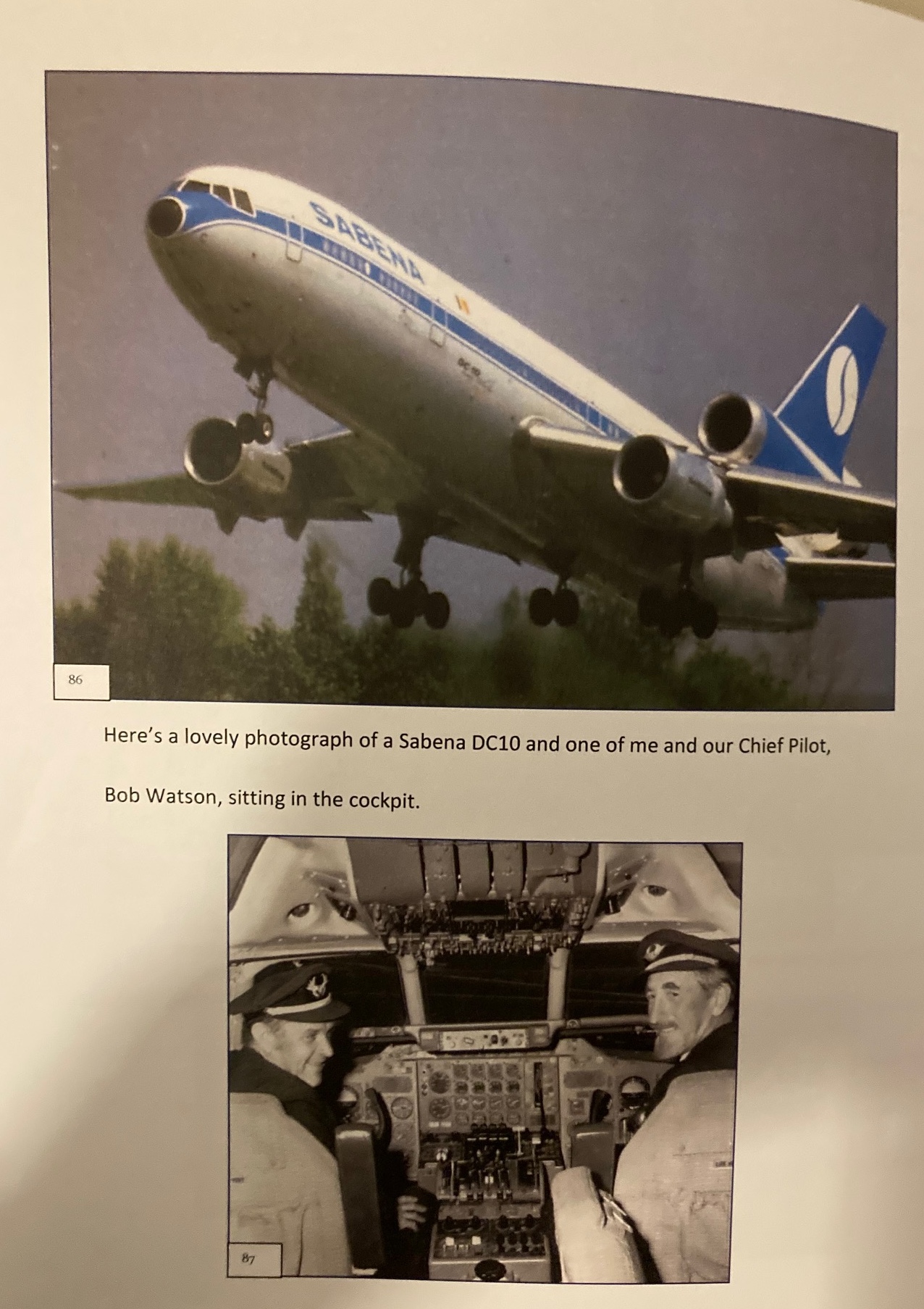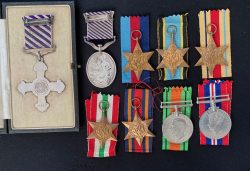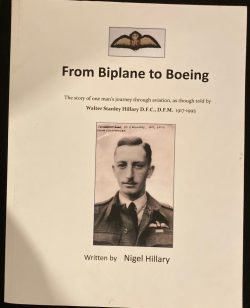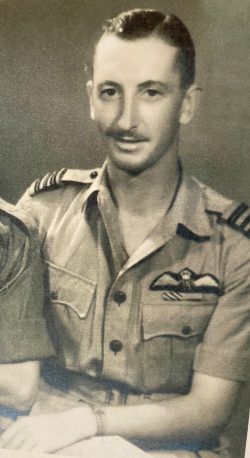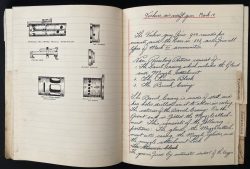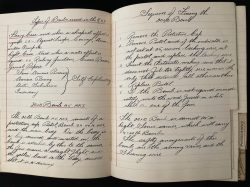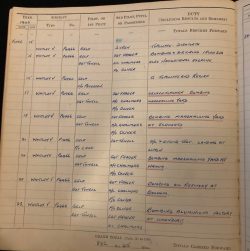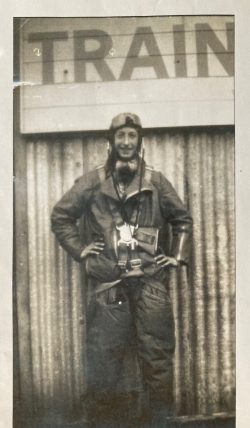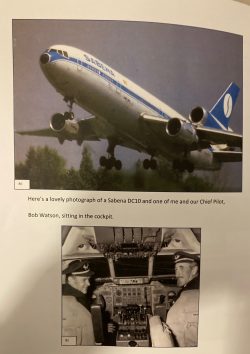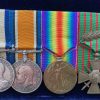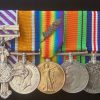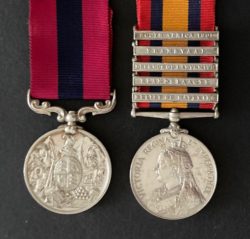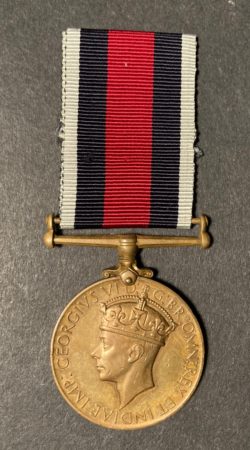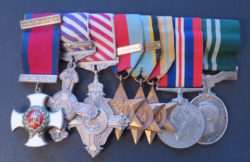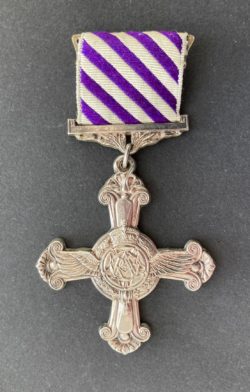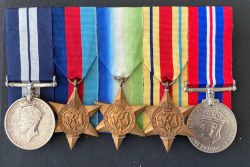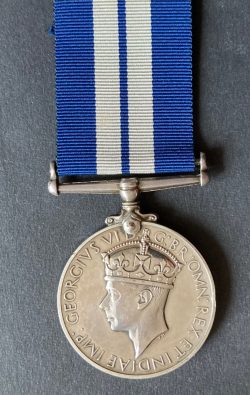A superb Distinguished Flying Cross, Distinguished Flying Medal group , from pre war bi-planes to Boeings , from Sgt to Wing Commander in a little over a year, with 3 log books, a lovely pre war hand written and illustrated extensive training book, a 111 page biography of the recipient published after his death. From 50 + ops almost exclusively over Germany (Whitley & Halifax) . One of the aircraft of 76 Squadron that scored multiple hits on Scharnhorst in July 1941. Later served in the Middle East including Dakotas and the parachute dropping of Greek Sacred Squadron on Samos, to Burma to the final operations in the recapture of Rangoon. A long civilian career post war mostly in African trouble spots including for a time the personal pilot of Moise Tshombe until they were all arrested and imprisoned.
£5,500.00
Out of stock
D.F.C. (reverse 1942) case of issue, D.F.M. (GV1) (Sgt.), 1939/45 Star, Air Crew Europe Star, Africa Star, Italy Star, Burma Star, Defence medal , War Medal.
DFC DFM with original ribbons and pins and never worn
W/Cdr. W.S. Hillary
With three log books covering whole of RAF active service from 1937 – 1946
Superb pre war hand written and illustrated training manual
Copy of recipients biography written in autobiographical form by the recipient’s son (111 pages with illustrations published by Amazon)
D.F.M. L.G. 30/07/1940
Recommendation states (Tavender)
‘This NCO displays a fine sense of devotion to duty and integrity. He seldom fails to complete a mission successfully . He has shown himself to be a most proficient Captain and is a source of inspiration to all his crew and flight.’
D.F.C. L.G. 30/1/1942 A/Sq. Ldr. 76 Sqdn
Recommendation
‘Acting S/Ldr Hillary is a captain of aircraft and flight commander of outstanding courage and ability. He has been operating continuously since the war began, and has never shown signs of tiredness or waning enthusiasm . He is always eager for any job he undertakes , and never leaves it until successfully completed. When returning from Hanover on one occasion, the inner port engine of S/Ldr Hillarys aircraft failed completely over the Dutch coast. He remained unperturbed , set a course for the Norfolk coast, and landed safely on three engines.’
He enlisted in the RAF in 1935. Selected for flying training he commenced in 1936 on Blackburn bi-plane trainers, Hawker Harts. And finally Handley Page Heyford bi plane bomber (the stock heavy bomber of the later 1930’s to be fortunately replaced by the Whitley). Hillary wrote ’She could survive at 21,000 feet but was a bit sluggish, she carried 2,500 lb of bombs and three Lewis Guns
His service log commences in October 1937 as Pilot 78 Squadron (Whitleys)
An entry for in September , 1939 simply states ‘September 3rd 1939 Declaration of war on Germany
Posted to 10 Squadron, Dishforth Sept. 10th.’ The first months of the war saw nickel raids and reconnaissance . His war commenced in earnest in May 1940 on the 15th with a bombing raid of a petrol store in the Ruhr Valley followed two nights later with a raid on an oil refinery in Bremen. Ops followed in rapid succession exclusively on German targets comprising marshalling yards , refineries and such as the Ichenburg aluminium factory and the Focke Wulf factory at Bremen and from 15 May to 31 July had completed 24 ops on German targets.
Posted to 35 Squadron at Linton in Feb. 1941 Now on Halifax he recommenced ops on 10 March . After 2 ops he transfers to 76 Sqdn also at Linton for a further 11 ops then sent to Uphaven for OTU Instructors course during the course of which he took part in the 1000 bomber raid to Bremen 25 June, 1942.
In April 1943 he was posted to Ras – El- Mar NWAAF and in May 1945 to Burma for operations in support of the taking of Rangoon
Entries from the recipient’s log book and biography
4 January 1940 ’Nickel dropping on Bremen, severe A.A. fire encountered , fairly accurate crashed on landing at base, striking tree with wing tip on way in.’
24 June, 1942 Operations 2nd Millennium bombing Bremen, practically a daylight raid’ (whilst with 1652 Halifax Conversion Unit)
Hillary wrote
‘On 25 June they let me take a crew on the 2nd Millennium, over Bremen. I took some of our youngsters with me, feeling that I could keep them safe. Our Squadron lost nobody that night. Bremen was a mess.’
8. July 1941 Operations Leuna Oil Refineries. Badly shot up on return journey over Ruhr.
24 July 1941 ‘Operations bombing Scharnhorst at La Pallice’
Hillary later wrote
‘This was a joint operation with the Americans and we hit her hard. We scored five hits almost in a straight line along the starboard side. We also knocked out her gun turrets and half her anti-aircraft battery and was listing quite badly as we flew off. Incredibly after the pasting we gave her, she still limped into Brest the next day.’
29/12/1942 ‘crashed coming into land 3 injured including self’
Aircraft accident report ‘On 29 December in snowy conditions the aircraft suffered engine failure on take off and was unable to climb, the pilot attempted take the aircraft back in to land as he could not maintain height but then opted to crash land. The aircraft caught fire but all on board escaped injury (sic)
(Hillary did not fly for three months)
1 November, 1943
Ops . (Now with 216 Dakota) ‘Dropping 20 Paratroopers, Greek Sacred Squadron on Island of Samos
‘On the 1st of November I was delighted to meet a 55 year old Colonel in the Greek Army. He was twice my age , and here he was clambering into the Dakota with his men, the Sacred Brigade to parachute onto Samos. These were some of the bravest men I’ve ever known. ‘
Hillary ended his service career in July 1946 ‘The war was over. They really wouldn’t need an over-qualified, over experienced Bomber Pilot with medals all over his chest.’
Faced with a double drop in rank to retain a career he looked to a new life in commercial aviation. A short term with Scottish Airways led to a roll with East African Airways and then Sabena in the Belgian Congo
‘In 1958 the Belgian Congo became Zaire. There was a huge amount of upheaval. Moise Tshombe was the leader of Katanga and in direct opposition to Patrice Lamumba in the Congo. I was asked to become the former’s personal pilot and did so for a time until that is, we all got arrested and thrown iinto an internment camp. For six weeks. On my release Sabena sent me to Libya to work the oilfields.’
Hillary ended his flying career in August 1977 flying a DC10 from Brussels to Kinshasa.
He died in Denmark in 1995
A wonderful group encompassing the widest of spectrums.
